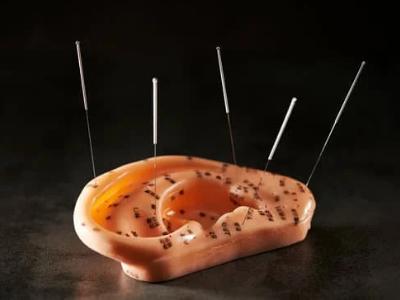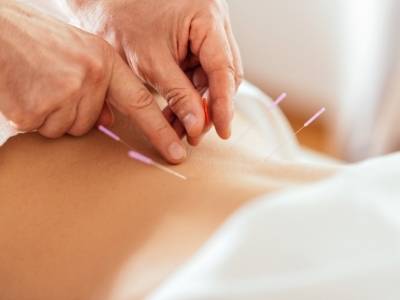In honor of Black History Month, I wanted to share some of the stories of how acupuncture came to be a legitimate practice in the US largely through the activism of some unlikely proponents—the Black Panthers and the Young Lords. Our medical history is full of examples of people of color being exploited by the medical industry, of people suffering in experiments because it was assumed their skin color prevented them from “really feeling pain” and other abominations that continue in less obvious ways to impact access to effective and safe health care for people of color. It took radical, focused, and illegal actions to improve access to health care for people of color in New York, and the Lincoln Detox Center still stands as an inspiring story of community activism for positive change. The model of the Lincoln Detox Center for treating addiction still stands as the gold standard for effective treatment.
In the 1970s acupuncture went from something in the back alleys of Chinatowns across the US to a vital element in community clinics founded and run by leaders in the Civil Rights community and became a subject of national interest after Henry Kissinger’s seminal trip to China, where doctors demonstrated acupuncture anesthesia during surgery. In 1974, California became the first state to openly license acupuncture after public outcry following the arrest of Dr. Miriam Lee. If it hadn’t been for the very public use of acupuncture in these community clinics and building awareness of the efficacy of acupuncture, I doubt the public outcry would have been very loud, and acupuncture might still be unregulated (as it is in a handful of states including Alabama, Oklahoma, and South Dakota). Thanks to these pioneering efforts, acupuncture has become recognized as a primary treatment option for pain, addiction, anxiety, and more.
Of note, at that time in China, acupuncture was part of an outreach to provide basic health care to the poor, rural regions of the country as part of the Barefoot Doctors. Elements of the traditional practices of acupuncture had been simplified into a standardized practice by Chinese physicians called “Traditional Chinese Medicine”, which is the foundation of most acupuncture training here in the US. One doctor who was on one of these trips to China, Tolbert Small, MD observed the acupuncture demonstration and asked for treatment for himself. He was intrigued enough to ask for more information. He was able to record 4 hours of lecture on the use of acupuncture and estim (electrical stimulation), procure some needles and an estim machine, and proceeded to practice on himself and his family after his return from China. Back in Oakland, he obtained an English translation of a Chinese Medicine text to study and expand his understanding of acupuncture.
He then incorporated acupuncture, mostly electro-acupuncture, into his practice in his community clinic and pioneered the use of acupuncture for the treatment of the symptoms of sickle-cell anemia. Dr. Small primarily used acupuncture to treat various kinds of pain. He was also pivotal in bringing national awareness to the plight of people with sickle-cell anemia and garnering more funding for testing and research of treatment. He even used acupuncture to ease his wife’s labor pains during two of her deliveries and may have been the first MD to do so in the US. To learn more about Dr. Small, I recommend this interview.

On the other side of the country in the South Bronx, Matulu Shakur (stepfather of Tupac Shakur) was one of the providers in the Lincoln Detox Center who heard about acupuncture for the treatment of addiction in Hong Kong in a New York Times article, and took an interest. He went to Chinatown to purchase acupuncture kits and books from doctors, then went to Montreal for training. There he studied how to treat addiction with acupuncture and later traveled to China, Switzerland, and other countries where acupuncture was used more openly. He was later licensed in California as an acupuncturist and founded an acupuncture school in the Bronx. His work along with those like Michael O. Smith, MD, DAc, lead to the development of the NADA protocol—a simple 5-point ear acupuncture protocol that is now used throughout the country for the treatment of addiction.
The Lincoln Detox Center was also notable for the development of the first patient bill of rights—changing the relationship between doctor and patient to protect patient rights and give them a voice in their care. Cleo Silvers, while not an acupuncturist, was a community organizer and advocate who was instrumental in authoring the patient bill of rights to ensure patients had access to quality care, their medical records, and the right to not be experimented on without their knowledge or consent—things that were grossly lacking especially among patients of color that we now take for granted.
Another key leader in the Lincoln Detox story was Richard Taft, MD; who was likely murdered during his tenure, though his death was staged to look like a suicide. He was working to publicize the dangers of methadone and promote acupuncture and other treatments for true detox at the time of his death. Today acupuncture continues to provide a safe alternative to methadone in the treatment of addiction, while at the same time continuing to be underutilized in many treatment centers and not readily accessible for the people who most need it. It is my hope that as awareness grows, access to acupuncture becomes a standard practice for addiction for all people.
One question we hear from patients quite often is, “If I’m getting acupuncture, is it ok to see the chiropractor?” or vice versa. Chiropractic care and acupuncture are actually rather complementary to one another! In fact, we have some exciting news: Beginning October 2022, we will have chiropractic care available at our Magnolia location with Dr. Nowelle Altman-Sigman!
Chiropractic care is a manual, hands-on treatment that focuses on correcting misalignments of the joints, especially those of the spinal column. This is a viable treatment for those experiencing neck, back, or joint pain and for those suffering from headaches and neuromusculoskeletal problems. Chiropractic treatments are an effective, non-invasive and holistic approach to many ailments, providing pain relief and in many cases, relief from further issues stemming from blockages in the body caused by misalignment. Often, patients of chiropractic care also note improvements in quality of sleep, digestion, energy levels, and even mood.
Acupuncture is an entirely different modality—using fine, sterile needles inserted at specific anatomical points on the body. While acupuncture treats a wide range of ailments by promoting the body’s natural healing abilities, releasing feel-good endorphins and restoring the body to homeostasis, it does have commonalities with chiropractic care. Both are holistic, drug-free options for care with a patient-centered approach that promotes natural healing and optimal health. Acupuncture and chiropractic care both share the objective of balancing the body’s structure and its support systems.

When both acupuncture and chiropractic treatments are combined, you can expect to see more improvement over less time. While a chiropractic adjustment corrects the body’s structure and eliminates blockages in the body caused by misalignment, acupuncture further relaxes the muscles, reduces pain and inflammation, and assists the flow of energy through the body where these blockages once existed; more importantly, it helps the body adapt to and maintain its corrected structure.
These two treatments working together offer an unmatched, supportive and holistic approach to pain relief. If you’d like to incorporate chiropractic care into your acupuncture routine we will begin offering treatments with Nowelle Altman-Sigman, DC starting October 2022!
She will be available on Wednesdays at our Magnolia location and we couldn’t be more excited! Along with chiropractic adjustments, Dr. Nowelle Altman-Sigman will also offer craniosacral therapy, visceral manipulation, and functional medicine. For further information or to be added to her waitlist, call our office at 270-506-3853, and stay tuned to our website for more updates!
Follow Raja Wellness on Facebook and Instagram!
Follow Raja Goods on Instagram!